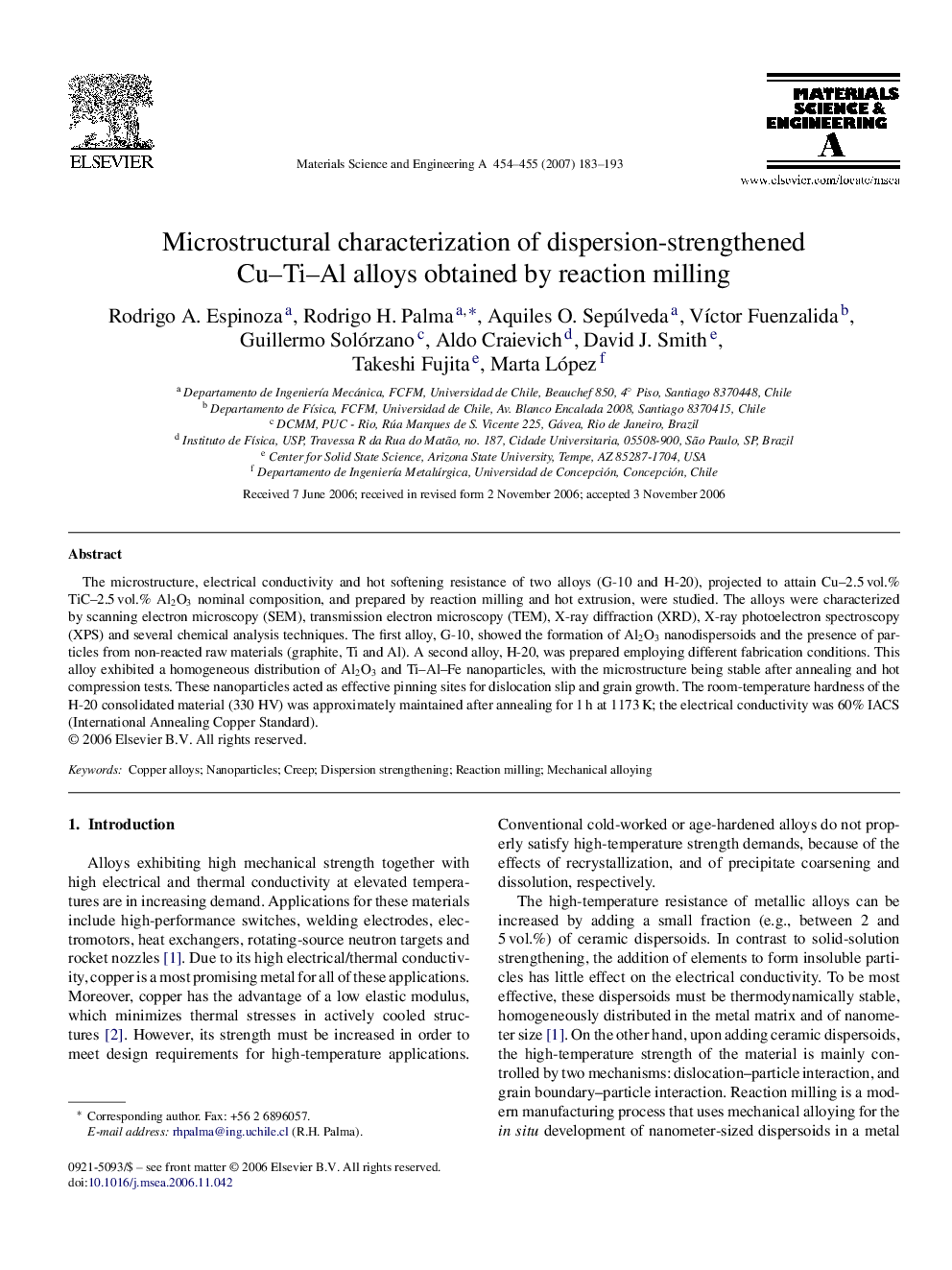| Article ID | Journal | Published Year | Pages | File Type |
|---|---|---|---|---|
| 1584253 | Materials Science and Engineering: A | 2007 | 11 Pages |
Abstract
The microstructure, electrical conductivity and hot softening resistance of two alloys (G-10 and H-20), projected to attain Cu-2.5Â vol.% TiC-2.5Â vol.% Al2O3 nominal composition, and prepared by reaction milling and hot extrusion, were studied. The alloys were characterized by scanning electron microscopy (SEM), transmission electron microscopy (TEM), X-ray diffraction (XRD), X-ray photoelectron spectroscopy (XPS) and several chemical analysis techniques. The first alloy, G-10, showed the formation of Al2O3 nanodispersoids and the presence of particles from non-reacted raw materials (graphite, Ti and Al). A second alloy, H-20, was prepared employing different fabrication conditions. This alloy exhibited a homogeneous distribution of Al2O3 and Ti-Al-Fe nanoparticles, with the microstructure being stable after annealing and hot compression tests. These nanoparticles acted as effective pinning sites for dislocation slip and grain growth. The room-temperature hardness of the H-20 consolidated material (330 HV) was approximately maintained after annealing for 1Â h at 1173Â K; the electrical conductivity was 60% IACS (International Annealing Copper Standard).
Related Topics
Physical Sciences and Engineering
Materials Science
Materials Science (General)
Authors
Rodrigo A. Espinoza, Rodrigo H. Palma, Aquiles O. Sepúlveda, VÃctor Fuenzalida, Guillermo Solórzano, Aldo Craievich, David J. Smith, Takeshi Fujita, Marta López,
